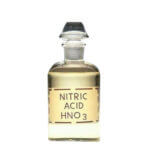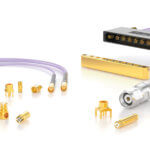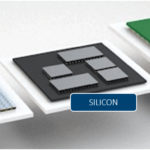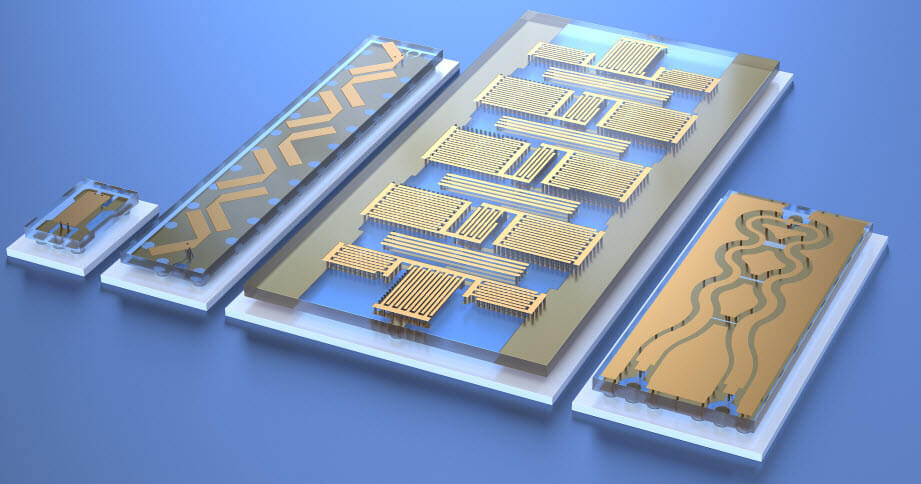
In a previous blog discussing glass core technology, we covered the advantages of using glass as a substrate vs silicon or PCB, and how Samtec’s Glass Core Technology can be used for a multitude of applications.
One of those applications is found in the RF world with using glass for RF filters, RF crossovers, and a Wilkinson Splitter.
RF Applications
Bandpass Filters
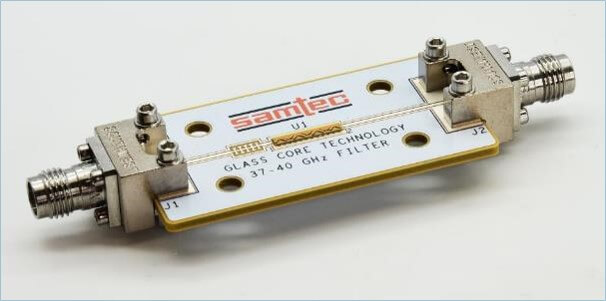
As an example of how glass can perform in the RF world, 430 – 490 MHz and 37 – 40 GHz bandpass filters were designed, built, and tested.
The results of bandpass filters were, as you would expect them to be, great. Specifically looking at the 37-40GHz bandpass, we get a loss of less than -1 dB.
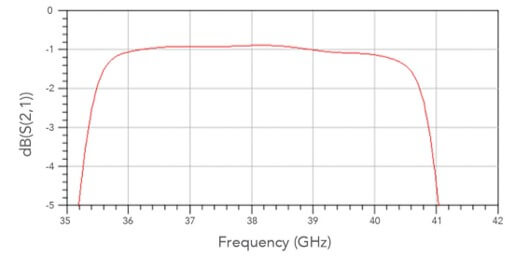
Why is this good? When compared to bandpass filters in similar frequency ranges made from other materials, the glass bandpass filters had less than half of the loss of traditional designs. This is based on a sampling of data from the market where loss was listed as -2 through -3 dB.
RF Crossover
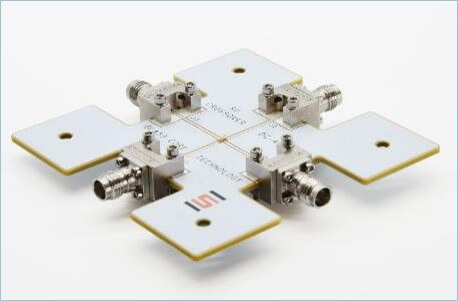
The RF crossover was designed to to operate as a DC-40GHz 0805 K-Band crossover. The overall size of the crossover 2.00 mm x 1.25 mm x 260 µm.
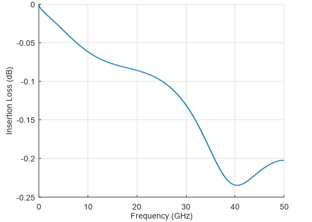
This RF crossover has a much larger operating range (DC – 40 GHz) vs many of the comparable RF crossovers on the market (DC – 6 GHz).
Insertion loss for the RF crossover is also low over the range of operation with approximately -0.05 dB loss at 6 GHz through -0.23 dB loss at 40 GHz.
What else can glass do?
Samtec can develop a wide range of RF components, which include baluns, couplers, high/low-pass filters, impedance matching devices, diplexers, analog/digital filters, and cross-overs.
Have a specific application that you would be interested in Glass Core Technology as a solution? Please contact [email protected] for more information.
Read more about Samtec’s RF components on Samtec.com.
